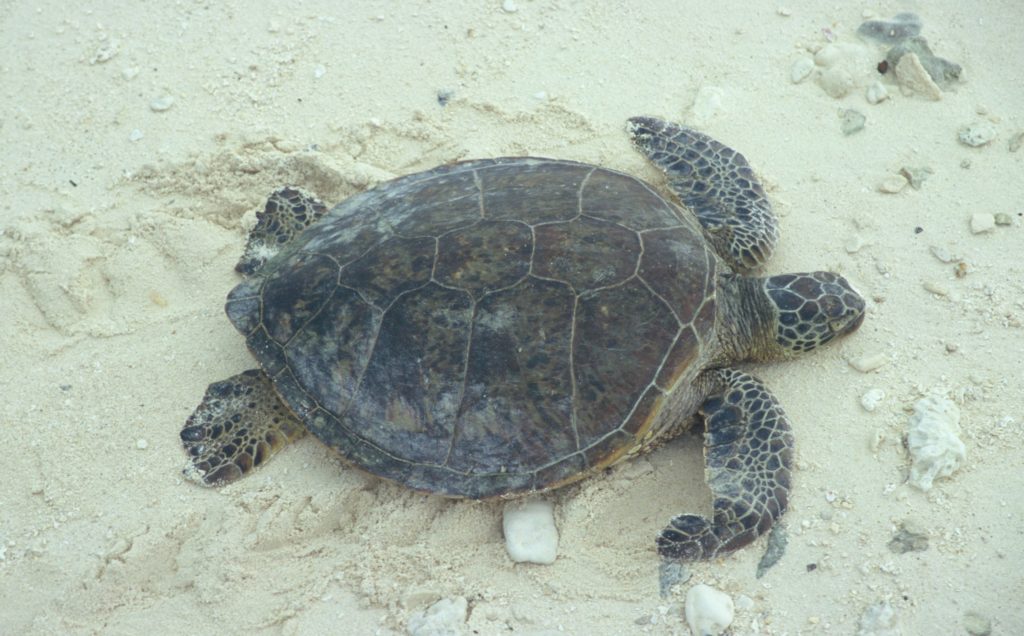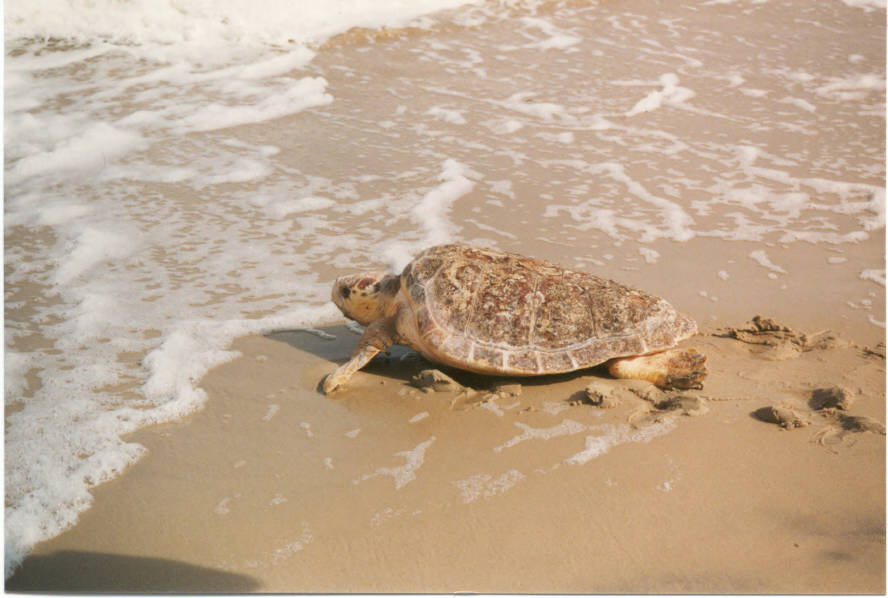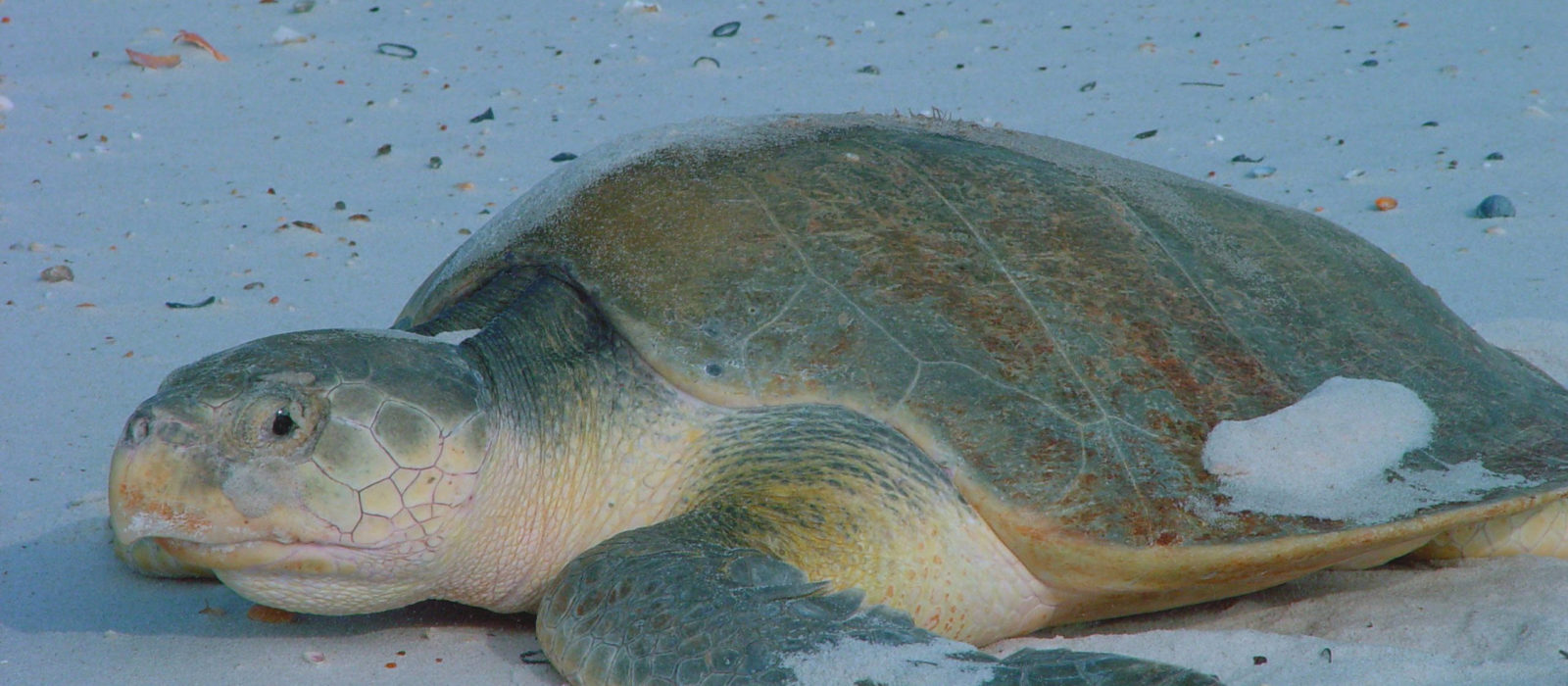Cooling water imperils these remarkable reptiles
If you find a cold-stunned sea turtle – alive or dead – please immediately call the Wellfleet Bay Wildlife Sanctuary stranding hotline, (508) 349-2615 x6104
Many people know sea turtles as primarily tropical animals. However, sea turtles engage in annual migrations that bring them to northern regions (they have even been documented in Maine), with many turtles aggregating within Cape Cod Bay. It may seem odd to highlight sea turtles in November, but this is actually the perfect time to do so. During the summer months, sea turtles migrate north to follow food sources. As the season goes on and water temperatures begin to cool, many stay too long and get trapped and end up cold-stunned. Turtles face risks year-round from vessel strikes and entanglement. But cold-stunning is an added seasonal risk, one that an educated public can help mitigate.
Four out of the world’s seven sea turtle species occur regularly in Massachusetts waters: Kemps’s ridley, loggerhead, green, and leatherback sea turtles. Hawksbill turtles have also been documented here. All of the turtle species found in this region are listed as threatened or endangered. Being reptiles, most sea turtles thermoregulate based on the environment they are in. Kemp’s ridley, loggerhead, and green sea turtles are reliant on environmental conditions to maintain their body temperature. Leatherback sea turtles, in contrast, are better able to regulate their body temperature and typically do not fall victim to cold-stunning.
Cold-Stunned Sea Turtles
Cape Cod Bay is a stranding hotspot for sea turtles in the winter. It is believed that climate change is increasing the frequency with which turtles are exposed to cold water. Mild autumn temperatures encourage turtles to remain at high latitudes to feed. When temperatures cool suddenly later in the fall, turtles attempt to move south, not realizing that there is a land mass preventing them from accessing the warm waters of the Gulf Stream. As their mobility declines with dropping sea temperatures, the odds decrease of their being able to find their way around the hook-shaped barrier of Cape Cod.
Trapped in the frigid 50° or colder water temperatures, sea turtles are vulnerable to cold-stunning: hypothermia leaving them unable to move, eat, or escape. Large numbers of these turtles sometimes wash ashore on Cape Cod beaches, primarily on the bay side, many of them dead or near death. While this tragic phenomenon is most pronounced within Cape Cod Bay, there have been instances of sea turtles stranding on Martha’s Vineyard: for example, Kemp’s ridleys in 2017 and 2020. There have been years in which more than 1,000 sea turtles strand in our region within a three-month period, and these catastrophic events increase the possibility of stunned turtles turning up on the beaches of Martha’s Vineyard.

Green sea turtle. Photo: USFWS/Michael Lusk
Helping cold-stunned sea turtles
If you’re on the beach in late fall, be alert for stranded turtles. They are most likely to wash up on the windward side of the island. If you come across a stranded sea turtle on the beach, please follow these simple steps provided by Massachusetts Audubon’s Wellfleet Bay Wildlife Sanctuary:
=> Move the turtle above the high tide line cover with dry wrack or seaweed if available to protect from the wind.
=> Never grab or hold the turtle by the head or flippers, which can injure them. (Also, they can bite, so stay away from their mouths).
=> Call the Wellfleet Bay hotline at (508) 349-2615 x6104 to determine next steps, being sure to specify that you are on Martha’s Vineyard. You might save that number in your cell phone NOW, so you have it with you when you need it.
=> Gather location data and photos of the animal to aid in reporting.
=> Stay safe if you find a stunned turtle. Do not enter the water to retrieve a turtle; wait for it to come in with the tide. Be aware that these animals can be heavy and can bite as a fear response.
The Wellfleet Bay website notes that “it’s very important to recover these stranded turtles as quickly as possible. Do not assume a turtle is dead – turtles that appear lifeless are often still alive. Please note that it’s illegal under both state and federal law to harass sea turtles or transport them without a permit.” Another reason to avoid transporting them, or even transferring them to a warm car, is that they require a specific process to warm them safely. If they are warmed up too quickly, there can be critical consequences. Please leave that work to trained professionals. If in a rare case you are asked to transport the animal, please closely follow the directions provided by the organization.

Loggerhead sea turtle. Photo: USFWS
Massachusetts Audubon’s Wellfleet Bay Wildlife Sanctuary leads cold-stunning stranding response events on Cape Cod. Their staff and volunteers walk miles in cold and windy conditions searching for sea turtles in the hopes of locating them before it is too late. Wellfleet staff also respond to reports of stranded turtles; rescued turtles are transported to other local organizations such as the New England Aquarium and the National Marine Life Center, for skilled rehabilitation and, hopefully, eventual release. At this time, there isn’t an organization that responds to sea turtle strandings specifically on Martha’s Vineyard. So if you find a turtle on a Vineyard beach, calling Wellfleet Bay for advice and assistance is your (and the turtle’s) best bet.
Sammi Chaves is a science communicator and conservationist who has worked alongside a number of wildlife rescue and response organizations in the Northeast and strives to help wildlife in need. In 2022, she worked as the seasonal Communications Coordinator for BiodiversityWorks.
